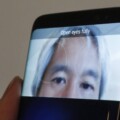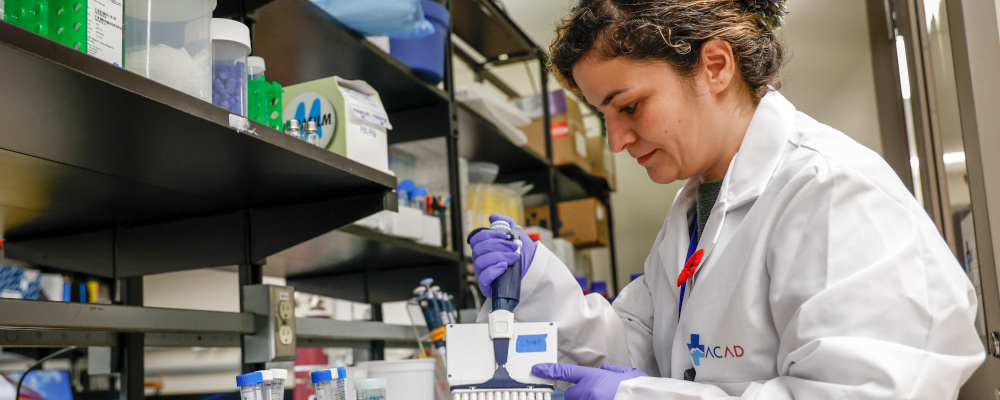“No. I cannot expect you to believe it. Take it as a lie—or a prophecy. Say I dreamed it in the workshop… Treat my assertion of its truth as a mere stroke of art to enhance its interest. And taking it as a story, what do you think of it?”
Such is the plea of H.G. Wells’ protagonist in the classic novella The Time Machine—a still gripping imagining of our ability to look around the chronological corner, perhaps to avoid its perils. The Time Traveller, as the speaker is known, acknowledges the strangeness of his claim to have seen the future. He knows the technology which enabled his prophecy is implausible. Yet, he is determined to convince his dinner guests, including the skeptical Medical Man, that we can know what lies ahead, and we must act to prepare for it. He presents his guests with some “withered white flowers” as evidence of his journey. They don’t heed the call.
But now, in an irony worthy of Wells, it is the Medical Man (or medical community) claiming to be prophetic. And, this time, it is the medical community that is desperately displaying evidence in the hopes of convincing others to act. We, and policymakers in particular, should heed the call.
Over the last several years—COVID-19 aside— the medical community in Canada has become steadily and deservedly more confident in its ability to forecast each of our medical futures. Part big data, part deep learning, part analytical insights, and part old-fashioned technological discovery, medicine is in the midst of a great decade of diagnostics, in which preventative health care is top-of-mind and the international community is rallying around the goal of improved access to screening technologies.
The quality of medical tests (be it in the lab, the radiology unit, or in the community), and the interpretive abilities of health-care providers, are not just better than it was a few years ago (as is the natural course of things) but dramatically better. And, in light of this, norms around disease screening are being legitimately questioned; perhaps most topically, in Canada, in the domain of breast cancer screening, and due to recent research from the University of Ottawa.
Admittedly, the notion that early detection improves clinical outcomes is not novel and has always had an intuitive appeal. In the current medical moment, however, evidence encouraging public policies that do more to enable predictive health care—including, but not limited to, smarter screening programs— is so undeniable as to inspire the growth of social movements. Providers, patients, and policymakers can’t turn away from the fact that someone diagnosed with Stage 1 lung cancer has a five-year survival rate of more than 60 percent, whereas a patient diagnosed at Stage 3 has a survival rate of roughly 15 percent. For breast cancer and ten-year survival rates, those figures are 96 percent and 53 percent, respectively. The cost-effectiveness of early breast cancer screening is potentially five times greater than the cost-effectiveness of screening in older patients. Put simply, seeing the future saves lives. And public policies that determine the timing and venue of diagnostic services matter immensely.
To which, the skeptical policymaker might ask: but can we actually do it? Can we actually, credibly predict what ailment you or I might have, and what tailored treatment you or I might need?
From a geneticist, the answer would be a resounding: yes! In oncology, for example, where genomic-based screening is becoming both sharper and more normalized, a health-care provider can gain insights into an asymptomatic patient’s risk of cancer that would have been unimaginable only a few years ago. To cite one of the latest Canadian-based breakthroughs, researchers at the University of British Columbia have developed a new hereditary cancer test that allows us to determine which parent might have generated a cancer-predisposing gene variant. This permits a much more focused approach to additional familial testing, as well as associated preventative health efforts.
Similarly, at the University of Alberta, a set of scientific trailblazers uncovered a new genetic marker linked to an increased risk of breast cancer. This discovery could enable earlier detection, contribute to a more tailored therapy regime, and shape the health-care community’s capacity to build population-based genomic screening models. In other words, we’re now seeing disease before it happens, at scale.
Shifting our gaze to the universe of instrumentation, innovations like the Nobel Prize-winning cryo-electron microscopy are also reason to be optimistic about our power to proactively manage disease states. While not oriented toward individual patient diagnosis in the same way genetic-based screening can be, cryo-EM technology (which has found an international centre of excellence in McGill University) literally freezes time (and proteins) so we may observe a new level of detail about the behaviour of biomolecules, generating a new level of understanding about therapies. And akin to the varied riches that now feature in the genetic research space, cryo-EM is just one of many new instruments that are revolutionizing what it means to “see” disease—both at the level of the individual patient and at more abstract levels of analysis. Add to that list: deep light imaging; three-dimensional MRI; and deep-tissue imaging.
And if foundational research and technological progress aren’t enough to convince you that the Time Traveller’s dream has started to come to life, look to select enlightened public policies as a further proof point of our predictive powers. Returning to the cases of lung cancer and breast cancer, we can be encouraged by the U.K.’s roll-out of mobile lung cancer screening, or (closer to home) Nova Scotia’s now longstanding leadership in mobile mammography. In the U.K., the push to scale lung checks through “NHS lung trucks” resulted in more than three-quarters of the cancers caught by the initiative being detected at stage one or two (which is startling, considering that less than a third of lung cancers in the U.K. are normally caught at those earlier stages).

Having said this, it would be a stretch to argue that the quantum and quality of public policies embracing predictive health-care interventions, such as better screening, are in any way equaling the insights and outputs of the medical community’s work in that space. While it seems fair to say that the concept of time in medicine has been bent—in the best possible way—, it’s less clear that providers and patients are being given the resources to act on such a warping of time. Whereas words like “symptom” or “remedy” might be replaced by phrases like “disposition” or “high-risk-population” at medical conferences, the health-care nomenclature of legislative buildings can be staler. As alluded to above, the pandemic might have shaken the confidence of some policymakers in the power of health forecasting.
But, as health systems are consistently being reminded, it’s critical to guard against recency bias and thus not forget about the range, depth, and breathtaking acceleration of medical advances that immediately preceded, paralleled, or quickly followed the lowest moments of COVID-19. Policymakers need to lean on the evidence and thus resist the tendency to apply old norms, old frameworks, and old practices (even those that are just a few years old) to new data, new analytics, new instruments, new capacities of providers, and new expectations of patients.
Alas, recency bias can be especially sticky in public policy ecosystems—given the democratically justifiable influence of political cycles. And public policy stickiness can be especially gummy in the health-care sector, given the existential risks involved in health policy decision-making. But it is precisely because of these stakes that policymakers can’t afford to ignore advances in medical science and the relationship between those advances and public policy program parameters. Likewise, as patients, we are compelled to relentlessly question the ability of our policy systems to keep up with the realities of our science.
Breast cancer awareness month has just concluded, and we must be tirelessly praising medical progress. And we must hope that, for those of us long energized by the future-oriented visions of Wells, our time has finally come.
Recommended for You

Falice Chin: The ‘wild and weird’ Calgary Stampede

‘A celebration of the spirit of Alberta’: Ryan Hastman on the political, economic, and cultural importance of the Calgary Stampede

Michael Geist: Children accessing porn is a problem, but government-approved age verification technologies are not the answer

Daniel Zekveld: Age verification for pornography is not government overreach



